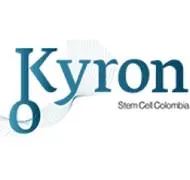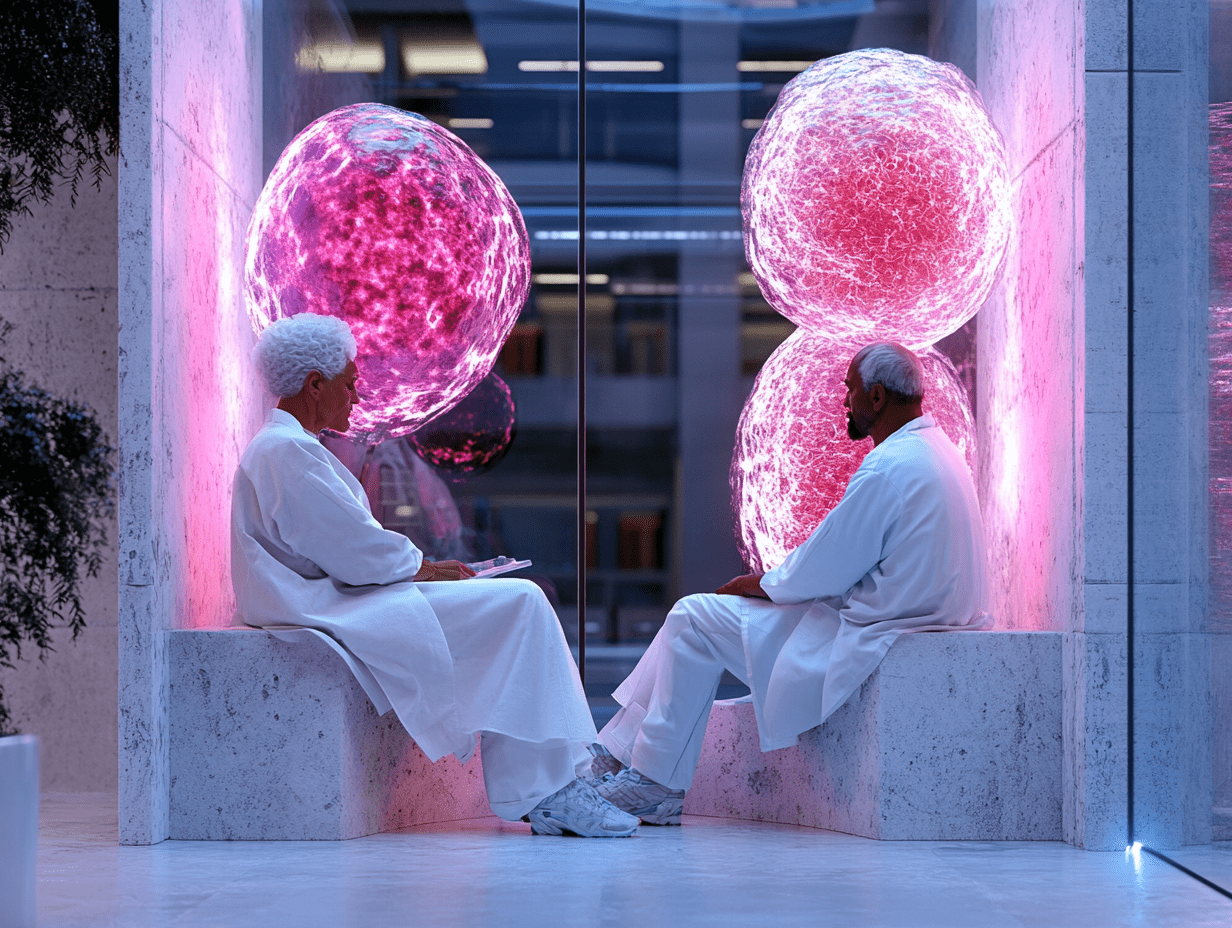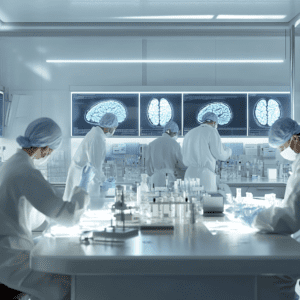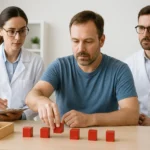Heart failure makes it hard for the heart to pump blood, leaving many people tired and struggling to breathe. Scientists have been testing stem cell therapies to see if they can help heal the heart.
This article looks at the latest studies on stem cells for heart failure, what’s worked so far, and what still needs more research.
We know there’s a ton of information to go through! Each study has a short summary at the start and the conclusion at the end summarizes everything.
Best Stem Cell Therapy clinics for Heart Failure
We don’t let any clinic just sign up or pay to be listed.
We speak to every clinic directly and review their medical team, the treatments they offer, how their stem cells are sourced and how they follow up with patients after treatment.
We also review licensing documents to confirm they meet the legal and medical standards of the country they operate in. For example, whether cells are processed in a GMP-certified facility or if they provide documentation on stem cell quality.
Clinics must also agree to let us collect and publish independent patient reviews. Both positive and negative.

Why Use Alt Treatment?
We don’t just list clinics, we help you choose the right one, get the best pricing and support you through the entire journey. For free.
Compare with Confidence: Get clinic matches based on your condition, location, and budget.
Ask the Right Questions: Know what to ask before committing
Save on Treatment: Unlock exclusive discounts on vetted clinics and follow-up care.
We’re With You After Treatment: We check in post-treatment and help resolve any issues.
Travel & Visa Help: Need to travel for care? We can help with logistics, documents, and local tips.
Found a Clinic Elsewhere? We’ll check their licensing and track record for you, free of charge.
No Strings Attached: Even if you choose a clinic we don’t partner with, we’re still here to help you make the best decision.
Top Stem Cell Therapy Clinics in Colombia for Heart Failure

Alevy specializes in stem cell and exosome therapy, using umbilical cord-derived MSCs to treat a wide variety of conditions, from Diabetes, Multiple Sclerosis to Osteoarthritis & Orthopaedic injuries. Their medical team brings over 15 years of experience in pain management, tissue regeneration, and immune system modulation. With three world-class clinics in Medellín, Bogotá, and Pereira, you have options on where you want treatment!
View Full Profile
Kyron Stem Cells is a Stem Cell Therapy clinic that focuses on a variety of treatments, including joint pain, chronic fatigue, autoimmune issues, and overall wellness. The clinic is led by Dr. Carlos Rojas, who has been working with stem cells since 1991 and has over a decade of experience in functional and hormone-based medicine. He is known for creating treatment plans that are genuinely personalized, based on each patient’s biology and lab results.
View Full ProfileCurrent Trials
PRIME-HFrEF Trial – Shanghai East Hospital, School of Medicine: China
This study is testing whether giving repeated doses of special stem cells from donated umbilical cords can safely make hearts pump better in people with heart failure. They also wanted to know whether doing it multiple times works better than just once.If you want to read more about it, you can check out the PRIME-HFrEF trial protocol.
Participants:
- Sample size: 40 patients with heart failure with reduced ejection fraction (HFrEF). Meaning their hearts have weaker pumping strength than normal.
- Demographics:
- Age: 18–80 years; average 57 years.
- Sex: 71.79% male, 28.21% female.
- Baseline NYHA class: Mostly II–III. (they experienced shortness of breath, fatigue, or limitations with normal or light physical activity, but were not completely incapacitated.)
- All patients had hearts pumping at 40% or less of normal strength and had been on consistent heart failure medications for at least three months before starting the study.
- Age: 18–80 years; average 57 years.
Procedure:
- Delivery method: Intravenous (IV) infusions.
The 40 patients were randomized 1:1 into two groups:
- UC-MSC group: Received three intravenous infusions of umbilical cord mesenchymal stem cells.
- Placebo group: Received three infusions of a placebo solution (1% human serum albumin only) on the same schedule
- Dose: Each patient in the UC-MSC group received 1 million stem cells for every kilogram they weighed at each treatment.
- Schedule: Three infusions given every 6 weeks (weeks 0, 6, and 12).
- Premedication: Methylprednisolone (40 mg) administered before each infusion to prevent allergic reactions.
- Follow-up: 12 months after the last infusion.
Cell Type Used:
- Umbilical cord-derived mesenchymal stem cells (UC-MSCs).
How Cells Were Prepared:
- Source: Wharton’s jelly from umbilical cords of healthy donors.
- Isolation & Culturing:
- Umbilical cords cleaned and Wharton’s jelly chopped into small pieces.
- The umbilical cord tissue pieces were put in lab dishes with a nutrient liquid (α-MEM) enriched with a serum substitute (UltraGRO-Advanced) to help the stem cells grow.
- The stem cells moved out of the tissue pieces and grew until they covered about 80% of the dish, at which point they were ready to be collected or moved to new dishes.
- Umbilical cords cleaned and Wharton’s jelly chopped into small pieces.
- Passage number:
- Cells expanded up to passage 5 (considered pure and homogeneous by then).
- Cells frozen at passage 3; thawed and expanded to passage 5 for treatments.
- Cells expanded up to passage 5 (considered pure and homogeneous by then).
Quality & Safety Testing:
- After culturing, they were tested using ISCT criteria:
- Positive: CD105, CD90, CD73. These markers confirm the cells are true mesenchymal stem cells.
- Negative: CD11/CD19/CD31/CD34/CD45/HLA-DR. These markers are found on blood and immune cells, so testing negative for these means the stem cell sample was very pure and not contaminated with unwanted cell types.
- Karyotype analysis with G-banding was done. This checks the stem cells’ chromosomes to make sure they’re normal and stable, which helps confirm the cells are safe for patient use.
- They tested whether the stem cells could turn into fat, bone, and cartilage cells in the lab. Successfully doing so confirmed the cells were true multipotent stem cells, meaning they were still healthy and functional.(Trilineage differentiation)
- Tumorigenicity testing using the soft agar assay checks if the stem cells can grow like cancer cells. If they grow floating in soft agar, it could mean they’re unsafe. But in this study, the test confirmed the stem cells didn’t have tumor-forming behavior.
- Immune function assays (T-cell suppression).
- Pathogen screening (mycoplasma, bacteria, endotoxin, viruses).
- Short tandem repeat (STR) analysis for donor identity and consistency.
Next Steps:
- Status: Enrollment completed in June 2022; final patient follow-up expected to have ended by April 2023.
- Results: No published outcomes yet; as of December 2023, the clinical trial registry has no results posted.
Heart Failure can be frustrating and overwhelming to treat. We’re not here to hype miracle cures. Our goal is to help you decide for yourself if it’s worth exploring, risks involved & treatment prices around the world.
Get Free GuidanceNo pressure. No spam. Just honest advice to help choose the right clinic.
CardiAMP Heart Failure Phase III Trial for Patients With Ischemic Heart Failure: North America
BioCardia, a medical company, is running a study to find out if injecting a patient’s own bone marrow cells directly into their heart can safely and effectively improve heart function in people with heart failure caused by blocked arteries. The study is testing whether this cell therapy can help patients feel better, avoid hospital stays, and live longer compared to standard care without the cell injection.
More details can be found on BioCardia’s study page.
Participants:
- The study plans to enroll 250 adult patients, both men and women, aged 21 to 80 years old.
- All patients must have ischemic heart failure with reduced ejection fraction (left ventricular ejection fraction greater than 20% but less than 40%) and meet other health criteria like being on stable heart failure therapy for at least three months.
Procedure:
- Patients undergo left ventricular catheterization.
- In the treatment group, doctors use the CardiAMP cell therapy system during a heart catheterization to inject the patient’s own concentrated autologous bone marrow mononuclear cells (ABM MNC) directly into the heart muscle (intramyocardial injection).
- The control group receives a sham procedure consisting of diagnostic left ventricular catheterization without cell injection.
Cell Type Used:
- Autologous bone marrow mononuclear cells (ABM MNC), which are a mix of cell types including hematopoietic stem cells, mesenchymal stem cells, endothelial progenitor cells, and immune cells isolated from the patient’s own bone marrow.
- Mononuclear means these cells each have a single, round nucleus, which is a key feature of the types of stem and immune cells used for heart repair.
How Cells Were Prepared:
- The cells are not cultured or expanded.
- Bone marrow is aspirated from the patient’s hip during the same procedure day.
- The CardiAMP cell therapy system then isolates and concentrates the mononuclear cell fraction from the aspirate.
- These concentrated cells are immediately delivered intramyocardially during the same catheterization session.
- There is no ex vivo culturing or passage, only isolation and concentration of the patient’s own cells.
Next Steps:
- The study is currently recruiting participants in the United States, with Morton Plant Hospital in Clearwater, Florida, as an active site.
- Patients who meet eligibility criteria will be randomized to either the treatment or control group. Once enrolled, patients in the treatment group will undergo left ventricular catheterization with injection of their own isolated bone marrow mononuclear cells using the CardiAMP system, while control patients will have a sham catheterization without cell delivery.
- After treatment, patients will be followed for up to two years to assess both primary and secondary outcomes.
- These include measuring time to major events like death, heart transplant, or hospitalization, as well as quality-of-life scores using standardized questionnaires (MLwHFQ and KCCQ) and changes in functional capacity via the six-minute walk test.
- The primary analysis of the study’s main efficacy endpoint will occur after 12-24 months, with final primary outcome data collection estimated by April 2027. The study itself is expected to complete all follow-up by April 2029.
CardiAMP Chronic Myocardial Ischemia (CMI) Trial for patients with refractory angina Phase III: North America
The CardiAMP CMI trial is a study led by BioCardia, testing a new cell therapy for patients with severe chest pain (refractory angina) who can’t be treated with stents or surgery.
Researchers are using patients’ own bone marrow cells, rich in CD34+ cells, to see if injecting them directly into the heart can improve blood flow and reduce chest pain.
The goal is to find out whether this therapy can safely and effectively relieve symptoms and improve exercise ability in people with chronic myocardial ischemia.
Biocardia’s Presentation on the preliminary results has more details!
Participants:
- Sample size & demographics: The roll-in cohort included 4 male patients, aged 70–83 years
- All with Canadian Cardiovascular Society (CCS) class III–IV refractory angina. This means patients have severe chest pain that limits normal daily activities (Class III) or occurs even at rest (Class IV), despite maximum medical treatment.
Procedure:
- Delivery method: Doctors use a CardiAMP catheter (called Helix/Morph) to inject the cells through the skin (percutaneously) directly into the heart wall (transendocardially).
- This precise method places the cells right inside the heart muscle where blood flow is poor (ischemic areas), instead of just delivering them into a vein or into a heart artery, which is what many other studies do.
- This precise method places the cells right inside the heart muscle where blood flow is poor (ischemic areas), instead of just delivering them into a vein or into a heart artery, which is what many other studies do.
- Unique CardiAMP feature: Specialized catheter system ensuring direct myocardial placement, which may improve cell retention and effect.
Cell Type Used:
- Cells used: Autologous bone marrow mononuclear cells (BMMC) are stem cell taken from a patient’s own bone marrow
- These BMMC naturally include CD34+ progenitor cells, which are early stage blood and vessel forming cells.
- CD34+ cells are important because they help grow new blood vessels (angiogenesis) and repair small blood vessels (microvascular repair). Both of which can improve blood flow in heart tissue that isn’t getting enough oxygen.
- Unique CardiAMP feature: The trial only treats patients whose bone marrow has a lot of strong, healthy CD34+ cells.
- Before treatment, doctors test each patient’s bone marrow using CardiAMP’s Potency Assay, which measures how many good-quality CD34+ cells they have.
- This screening step helps make sure only patients who are most likely to benefit from the therapy actually get it.
How Cells Were Prepared:
- Processing: Bone marrow aspirate is isolated at the point of care using the CardiAMP Cell Separator. Producing a fresh, minimally manipulated BMMC product.
- Culturing: No culturing or expansion; cells are used fresh on the same day of aspiration.
- Unique CardiAMP feature: Proprietary Potency Assay identifies responders before treatment; this pre-selection step is unique and aims for higher consistency in outcomes.
Full Results and Success Rates
- Roll-in cohort early results (4 patients, 6-month follow-up):
- After 6 months of treatment, Angina episodes dropped from 9-13 a week to 1-2 episodes a week. Patients had 8 fewer chest pain events a week.
- Exercise tolerance improved from 7.2 minutes to 8.9 minutes on treadmill tests.
- When patients did a treadmill test, none of them had to stop exercising because of chest pain (angina)
- 100% of patients responded with angina improvement; 75% showed improved exercise tolerance.
- No angina medication changes reported, suggesting results were due to treatment, not meds.
- After 6 months of treatment, Angina episodes dropped from 9-13 a week to 1-2 episodes a week. Patients had 8 fewer chest pain events a week.
- Safety: No adverse events reported in this early group.
- Note: These results are preliminary; randomized trial outcomes are pending.
How Cells Worked:
- Mechanism: The therapy works by using CD34+ cells to release helpful signals (paracrine signaling) that trigger growth of new blood vessels, which helps repair small blood vessels & may improve blood flow to heart areas with poor circulation (ischemic myocardium).
- What was demonstrated: The early data showed reduced angina frequency and increased exercise duration. The results suggest that blood flow to the heart muscle improved. However, direct proof of new vessel growth was not measured.
What We Don’t Know:
- The mechanistic link between injected cells and new blood vessel formation hasn’t been directly imaged or biopsied.
- Long-term durability of the effects beyond 12 months remains unproven.
- Full randomized trial data is pending; results from only 4 patients are insufficient for definitive efficacy conclusions.
Next Steps:
- Full results from the full cohort of people are due to be released in 2025.
BioCardia Clinical Trial of Human Allogenic Culture-expanded Bone Marrow-derived Mesenchymal Stem Cells (CardiALLO)
BioCardia is testing CardiALLO™, a therapy using donor-derived Bone Marrow stem cells injected directly into the heart. Researchers want to see if it can safely improve heart function in people with chronic heart failure and reduced ejection fraction.
This study aims to find the best dose and determine whether these cells can reduce deaths, hospitalizations, and improve patients’ ability to walk.
The trial focuses on patients with active inflammation, since they may benefit most from stem cell therapy.
You can read more about this study on ClinicalTrials.gov (NCT05925608)
Participants:
- The study plans to enroll 39 patients in total.
- These are adults aged 21–80 with chronic ischemic heart failure with reduced ejection fraction (HFrEF). Reduced ejection fraction means the heart is too weak to pump enough blood, causing heart failure symptoms
- Specifically, people whose heart pumping strength is 20–40%, who have heart failure symptoms (NYHA Class II or III), and active inflammation shown by hs-CRP >2 mg/L.( hs-CRP is a blood marker that shows ongoing inflammation, which can worsen heart failure.)
- Phase 1 includes 9 patients split into three groups of 3 each, and Phase 2 will add about 30 more patients randomized 2:1 to treatment or control.
Procedure:
- The cells are delivered straight into the heart muscle using BioCardia’s Helix™ transendocardial delivery catheter. This lets doctors inject the cells accurately through a minimally invasive heart catheter procedure.
- This is different from many stem cell therapies that use intravenous (IV) infusion, which can cause cells to get stuck in the lungs.
- The control group in Phase 2 will have a sham catheterization without stem cell injection.
Cell Type Used:
- The study uses CardiALLO™ Human Allogenic Culture-expanded Bone marrow-derived Mesenchymal Stem Cells (hMSCs).
- These are bone marrow stem cells taken from a donor, then isolated and grown in the lab to reach specific doses for precise treatment.
How Cells Were Prepared:
- Isolated from donor bone marrow.
- Culture-expanded in a lab to grow enough cells for treatment.
- Expanded to 20 million, 100 million, or 200 million cells per dose depending on the patient’s assigned group in Phase 1.
- Quality controlled for identity, purity, sterility, and viability.
- Prepared under Good Manufacturing Practice (GMP) standards at BioCardia’s own facility in Sunnyvale, California.
- The documents do not mention special pre-conditioning (like hypoxia) or use of stem cell-conditioned media. The key innovation is the delivery catheter, not a unique cell preparation method.
Next Steps:
- The first group of 3 patients at 20 million cells has been treated, and the DSMB approved continuing the study.
- Next, the study will enroll the mid-dose group (100 million cells) and then the high-dose group (200 million cells) in Phase 1.
- Once all 9 Phase 1 patients finish treatment and safety follow-up, the trial will move to Phase 2, enrolling about 30 more patients randomized to either receive the chosen optimal dose of CardiALLO MSCs or undergo a sham procedure.
The main outcomes they’re measuring are:
- Safety: checking for serious side effects during the first 30 days after treatment.
- Effectiveness: tracking a combination of death from any cause, hospital stays for heart problems, and how far patients can walk in six minutes, over the course of 12 months.
- The trial aims to finish data collection by July 2025.
Previous Trials
DREAM-HF (Phase III, Mesoblast’s rexlemestrocel-L) Center for Clinical Research at The Texas Heart Institute: North America
Researchers led by Dr. Emerson Perin at The Texas Heart Institute in the United States, along with teams from hospitals and universities across the USA and Canada, conducted this study in partnership with Mesoblast. They wanted to find out if injecting MPC cells create by Mesoblast directly into the heart muscle could help people with severe heart failure.
If you want to read more about it, you can check out the original investigation on MPC’s treating heart failure.
Research Summary
Patients reported that they felt better and their daily quality of life improved after the treatment.
However, when doctors looked at heart scans, they could not see any physical changes or repairs to the heart itself.
Treatment Was Safe.
Participants:
- Sample size: 565 patients were enrolled but only 537 took part in the trial
- Demographics:
- Age: Mean ~63 years.
- Sex: ~78% male.
- 56% of patients had heart failure caused by blocked or narrowed heart arteries (ischemic heart failure), while 44% had heart failure from other causes not related to artery blockages (non-ischemic heart failure).
- NYHA Class: ~62% Class III, 38% Class II. (they experienced shortness of breath, fatigue, or limitations with normal or light physical activity, but were not completely incapacitated.)
- All patients had heart failure with reduced ejection fraction (HFrEF) on optimal medical therapy. (their hearts have weaker pumping strength than normal.)
- Age: Mean ~63 years.
Procedure:
- Delivery method: Single transendocardial injection (The treatment was injected directly into the heart muscle wall (endocardium), not into a vein).
- Technique:
- Doctors used a 3D mapping system (NOGA) & a thin injection tube (MyoStar catheter) to place the cells directly into the heart’s main pumping muscle.
- ~150 million cells injected into 15–20 targeted sites (0.2 mL per injection).
- Doctors used a 3D mapping system (NOGA) & a thin injection tube (MyoStar catheter) to place the cells directly into the heart’s main pumping muscle.
- Control group: Underwent sham catheterization with conscious sedation and left ventriculography but no cell injection.
Cell Type Used:
- Mesenchymal Precursor Cells (MPCs, a proprietary Mesoblast product):
- Allogeneic (donor-derived), bone marrow-derived.
- They used a very pure group of early-stage mesenchymal cells, identified by special markers (STRO-1 and STRO-3), which help control inflammation and support healing.
- These cells are much more precisely selected than regular bone marrow MSCs. Instead of a mix of many cell types like in standard BMAC, they’re a purified, early-stage subset with stronger immune-regulating properties.
- Allogeneic (donor-derived), bone marrow-derived.
How Cells Were Prepared:
- Source: Bone marrow mononuclear cells from healthy young adult donors.
- Selection: They used magnets and a STRO-3 antibody to grab only the helpful cells from the bone marrow and separate them from the rest.
- Expansion: Culture-expanded under current Good Manufacturing Practice (cGMP) conditions.
- Passage info: Specific passage number not stated, but standardized expansion protocols were used.
- Quality control:They checked every batch of cells to make sure they were safe and high-quality before freezing and giving them to patients
Full Results and Success Rates:
- Primary outcome: Failed. The treatment didn’t lower repeated hospital visits or dangerous heart rhythms, with a hazard ratio of 1.17 and a P value of 0.41, meaning there was no significant difference between the placebo & treatment group.
- Secondary outcomes: Also negative overall (no significant difference in terminal cardiac events or all-cause mortality).
- Positive exploratory findings:
- 58% reduction in risk of myocardial infarction or stroke (HR: 0.42) in overall analysis.
- For patients with high inflammation (hsCRP 2 mg/L or above), the treatment reduced heart attacks and strokes by 75%.
- One year after treatment, heart pumping ability improved slightly, especially in patients with high inflammation.
- 58% reduction in risk of myocardial infarction or stroke (HR: 0.42) in overall analysis.
- Side effects: The stem cell treatment didn’t cause more serious complications than usual care, and there were no signs of harmful immune reactions. Making it overall safe.
- Follow-up: Mean of 30 months, max of 66 months.
How Cells Worked:
- Mechanism proposed: Paracrine signaling, not direct differentiation.
- Researchers proposed that the cells work by “paracrine signaling,” meaning they don’t turn into new heart cells but instead release helpful substances that calm inflammation and improve blood vessel health.
- This could help reduce heart attacks and strokes, but the study didn’t prove the cells actually became part of the heart.
Looking into Stem Cell clinics for Heart Failure?
Browse verified stem cell clinics in Colombia, Japan and more that we’ve already personally vetted.
Browse Verified Stem Cell ClinicsCONCERT-HF (Phase II, CCTRN network): United States
This study, led by Dr. Roberto Bolli and a team of U.S. heart specialists from centers like the University of Miami, Texas Heart Institute, and Johns Hopkins, tested whether patients’ own stem cells (MSCs and CPCs) could safely improve outcomes in chronic ischaemic heart failure. Conducted across seven major hospitals through the NIH’s Cardiovascular Cell Therapy Research Network, the trial aimed to see if these cells could reduce serious heart problems and improve quality of life.
You can read more on this study’s detailed article.
Results Summary
The treatment helped improve patients’ quality of life but didn’t show measurable improvements in heart function or structure on imaging.
Cells worked through Paracrine signalling & no adverse events reported.
Aim:
- Is combined treatment with autologous MSCs + CPCs feasible and safe?
Can these cells be reliably harvested, expanded, and injected into the heart without causing harm? - Do MSCs and CPCs (alone or combined) reduce HF-MACE (Heart Failure–related Major Adverse Cardiac Events)?
Can these therapies lower the rates of hospitalizations, heart failure worsening, or death? - Do these cell therapies improve quality of life, functional capacity, heart structure or function, or reduce scar size?
Will patients feel better, move better, or show measurable improvements in their hearts on imaging? - Is one cell type (MSCs or CPCs) superior, or does combining them offer added benefit?
Does using both cell types together give better results than using them alone?
Participants:
- Sample size: 125 patients randomized (planned: 144).
- Demographics:
- 93% male; average age 62.5 years.
- All had chronic ischaemic heart failure, with average left ventricular ejection fraction (LVEF) of 28.6%.
- 80% NYHA class II, 15% class III. (they experienced shortness of breath, fatigue, or limitations with normal or light physical activity, but were not completely incapacitated.)
- 93% male; average age 62.5 years.
Procedure:
- Cell delivery: A thin tube (catheter) was used to inject cells directly into the heart muscle, guided by the NOGA® XP system for precise placement.
- Treatment arms:
- MSCs alone,
- CPCs alone,
- MSCs + CPCs combination,
- Placebo (sham procedure).
- Dosages:
- Target dose: 150 million MSCs and/or 5 million CPCs per patient
- Follow-up: 12 months with visits at day 1, week 1, months 1, 3, 6, and 12
Cell Types Used:
- MSCs: Autologous bone marrow-derived mesenchymal stromal cells.
- CPCs: Heart stem cells (c-kit positive cardiac progenitor cells) taken from a small heart tissue sample (endomyocardial biopsy) from the patient’s own heart
How Cells Were Prepared:
- Source:
- MSCs: Bone marrow aspirate from each patient.
- CPCs: Endomyocardial biopsies (heart tissue samples).
- Manufacturing:
- Centralized GMP production at University of Miami Interdisciplinary Stem Cell Institute.
- Culturing:
- Cells expanded in culture; passaging per GMP protocols.
- Cells were tested for Quality:
- Positive: CD105, CD90, CD73. These markers confirm the cells are true mesenchymal stem cells.
- Negative: CD14/CD19/CD34/CD45/HLA-DR. These markers are found on blood and immune cells, so testing negative for these means the stem cell sample was very pure and not contaminated with unwanted cell types.
- Cells expanded in culture; passaging per GMP protocols.
- Release testing: Made sure the cells are sterile, alive, the right type and there are enough of them.
- Cryopreservation & shipment before injection.
Full Results and Success Rates
- Safety & Feasibility:
- They were able to collect, grow, and inject the cells at seven hospitals.
- No significant increase in adverse events vs. placebo.
- Efficacy:
- HF-MACE rates (major adverse cardiac events related to heart failure):
- CPCs alone: 6.5% had serious events, much lower than placebo’s 28.1% (P=0.043).
- MSCs+CPCs: 9.1% had serious events, lower than placebo’s 28.1% (P=0.061).
- MSCs alone: 24.1% had serious events, which wasn’t significantly less than the placebo group.
- Simply put, patients treated with CPCs alone had significantly fewer serious heart failure events compared to placebo. The combination of MSCs and CPCs showed a similar but not quite significant reduction, while MSCs alone did not significantly reduce these events.
- Quality of life:
- MLHFQ scores improved significantly in MSCs alone at 6 months, and MSCs+CPCs at 6 and 12 months.
- In other words, these treatments helped patients feel better and cope better with their heart failure symptoms.
- Objective measures. There were no important changes between groups in:
- how well the heart pumps (LVEF),
– amount of scar tissue,
– heart size (LV volumes),
– exercise capacity (peak VO₂),
– heart failure blood tests (NT-proBNP).
- how well the heart pumps (LVEF),
- Follow-up duration: 12 months.
- Side effects: Similar across groups; no new safety concerns.
How Cells Worked
- Mechanism: Benefits likely due to paracrine signaling, not regeneration:
- Cells released anti-inflammatory, antifibrotic, pro-angiogenic factors.
What We Don’t Know
- The treatment helped people feel better and stay out of the hospital, but we don’t know if it helped them live longer. The study was too small to tell for sure.
- Long-term durability of benefits beyond 12 months.
Seneca Trial Phase 1
Researchers from the Cardiovascular Cell Therapy Research Network (CCTRN), a group sponsored by the National Heart, Lung, and Blood Institute (NHLBI) and including teams from universities and hospitals across the USA, conducted this study. They wanted to see if injecting allo-MSCs (allogeneic mesenchymal stromal cells) directly into the heart could be a safe and doable treatment for people with heart failure from past chemotherapy.
If you want to read more about it, you can check out the original investigation
Results Summary
The study successfully met its main goals, showing that the treatment is both safe and feasible.
While it did not significantly improve heart pumping function, it did show a significant improvement in the patients’ quality of life.
The treatment was proven to be safe. Cells worked through paracrine signalling, not differentiation.
Participants:
- Sample size: 37 patients participated in the trial (6 in an open-label phase and 31 randomized).
- Demographics:
- Age: Mean ~57 years.
- Sex: ~68% female.
- All patients were cancer survivors with anthracycline-induced cardiomyopathy (AIC), a type of heart failure caused by chemotherapy.
- NYHA Class: The majority of patients (~84%) were Class II, with the remainder in Class III. (This means they experienced symptoms with normal or light physical activity).
- All patients had heart failure with reduced ejection fraction (LVEF ≤ 45%) and were already receiving stable, optimal medical therapy. (Their hearts have weaker pumping strength than normal).
Procedure:
- Delivery method: A single treatment of transendocardial injections. (The treatment was injected directly into the heart muscle wall, not into a vein).
- Technique:
- Doctors used an electromechanical 3D mapping system (
NOGA) and a thin injection tube (MyoStar catheter) to place the cells directly into targeted areas of the left ventricle. - 100 million cells were delivered in a total of 8 ml of fluid, given via 20 separate injections (0.4 mL per injection).
- Doctors used an electromechanical 3D mapping system (
- Control group: Received a placebo (a cell-free solution) delivered in the exact same manner, with 20 injections directly into the heart muscle.
Cell Types Used:
- Allogeneic Mesenchymal Stromal Cells (allo-MSCs):
- These were donor-derived cells taken from the bone marrow of a single healthy donor.
- Cells were tested for Quality:
- Positive: CD105, CD90, CD73. These markers confirm the cells are true mesenchymal stromal cells.
- Negative: CD45, CD14, CD19, CD34 , and they showed minimal Major Histocompatibility Complex class II expression (which includes HLA-DR). These markers are found on blood and immune cells, so testing negative for these means the stem cell sample was very pure and not contaminated with unwanted cell types.
- Using allogeneic (donor) cells is possible because MSCs have very low immunogenicity, meaning they do not typically cause an immune reaction from the patient’s body.
How Cells Were Prepared
- Source: Bone marrow was aspirated from a single, healthy 27-year-old female donor.
- Selection: The allo-MSCs were isolated from the bone marrow and then expanded in a lab.
- Expansion: The cells were culture-expanded to “passage 3” to create a sufficient number for the required dose.
- Quality control: Every batch of cells underwent extensive testing for viability (had to be ≥70%), sterility, and purity (checking the surface markers) before being approved, frozen, and shipped for patient use.
Full Results and Success Rates
- Primary outcome: Met. The study successfully demonstrated that the procedure was safe and feasible. There were no significant differences in adverse events between the treatment and placebo groups, and no immune reactions or new tumors were observed.
- Secondary outcomes (Effectiveness):
- Quality of Life (MLHFQ score): This was the only statistically significant efficacy finding. Patients who received the cells reported a significant improvement in their quality of life compared to the placebo group (
p=0.048). - Exercise Capacity (6-min walk test): A positive trend was observed favoring the cell group, but it did not reach statistical significance (p=0.056).
- Heart Function (LVEF & other CMR measures): No significant differences were found between the groups.
- Quality of Life (MLHFQ score): This was the only statistically significant efficacy finding. Patients who received the cells reported a significant improvement in their quality of life compared to the placebo group (
- Side effects: The cell treatment was safe and did not cause any additional complications or harmful immune reactions.
- Follow-up: Patients were followed for one year after the procedure.
How Cells Worked:
- Mechanism proposed: The study suggests the cells work through paracrine signaling, not by turning into new heart cells.
- This means they release helpful substances that have immunomodulatory, anti-fibrotic (reduce scarring), pro-angiogenic (help new blood vessels), and anti-inflammatory effects, which in turn helps the existing heart tissue function better.
Osaka University iPSC-Cardiomyocyte Patch Trial: Japan
This study, led by Shigeru Miyagawa and a team at Osaka University Graduate School of Medicine, tested heart muscle patches made from induced pluripotent stem cell-derived cardiomyocytes (iPSC-CMs) to treat severe ischemic heart failure. The research was funded by the Japan Agency for Medical Research and Development (AMED), with manufacturing done in-house at Osaka University.
You can read more on the study on their Pubmed Article.
Results Summary
The treatment was safe and showed symptom improvement in 2 of 3 patients, but didn’t consistently boost heart pumping strength.
The cells worked by improving blood flow, not replacing heart muscle, and no serious cell-related side effects or tumors were found.
Participants:
- Sample size: 3 patients.
- Ages: 51, 65, and 76 years old (all men).
- Condition: The patients had serious heart damage from blocked arteries (Severe Ischemic Cardiomyopathy) , causing their hearts to pump less than 35% of normal, which means their hearts were very weak.
- New York Heart Association (NYHA) class III heart failure symptoms. They experienced shortness of breath, fatigue, or limitations with normal or light physical activity, but were not completely incapacitated.)
- Location: Treated at Osaka University Graduate School of Medicine, Japan.
Procedure:
- Delivery method: Surgical transplantation of three cardiomyocyte patches per patient, each placed directly onto the heart’s left ventricle via open-chest surgery (thoracotomy) under general anesthesia.
- Immunosuppression: All patients received 3 months of immunosuppressive therapy (tacrolimus, mycophenolate mofetil, prednisolone) to reduce risk of rejection, then stopped to observe immune responses without continued drugs.
Cell Type Used
- Induced pluripotent stem cell-derived cardiomyocytes ( (adult cells that have been reprogrammed into heart muscle cells))
- Allogeneic origin: Cells were made from a donor HLA-homozygous iPSC line (stem cells from a donor with identical copies of key immune markers). This helps these cells be partially compatible with many patients’ immune systems without needing a perfect match.
How Cells Were Prepared
- iPSCs were cultured, expanded, and differentiated into cardiomyocytes at the Department of Cardiovascular Surgery and Frontier Regenerative Medicine, Osaka University.
- Each circular patch was ~3.5 cm in diameter and contained ~33 million cardiomyocytes.
- Three patches were made per patient (total ~100 million cells transplanted).
- Patches were checked for tumorigenic potential before implantation. No undifferentiated cells detected.
Full Results and Success Rates
- Follow-up: 1 year per patient.
- Success in 2 of 3 patients:
- NYHA class improved from level 3 to Level 1 within 6 months.
- The heart’s ability to pump blood improved (LVEF). For example, in one patient, it went from very weak (30% of normal) before the operation to stronger levels months later.
- Myocardial blood flow increased, especially in Case 1 (CFR rose from ~1.67 to 3.12).
- Blood flow to the heart muscle improved (myocardial blood flow). In Case 1, the coronary flow reserve (CFR) went up from about 1.67 before the treatment to 3.12 afterward, showing the heart’s blood vessels could deliver much more blood when needed.
- Exercise capacity (peak VO₂) improved in Cases 1 & 3.
- NYHA class improved from level 3 to Level 1 within 6 months.
- Limited success in 1 patient (Case 2):
- The patient’s heart function barely got better, and their heart failure symptoms stayed the same or got worse.
- Their BNP levels (a blood marker that rises when the heart is under stress) increased, which is a bad sign.
- They also had high levels of anti-HLA antibodies even before treatment, suggesting their immune system might have attacked the transplanted cells, possibly causing immune rejection.
- Side effects:
- 4 severe adverse events (chest discomfort, urinary infection, acute heart failure episode, amiodarone-induced pneumonia). BUT none related to the transplanted cells.
- Safety: No tumors seen on FDG-PET scans or from biomarkers (AFP, CA19-9, CEA, hCG).
How Cells Worked
- Mechanism proven: Improvement was likely from signaling effects. Patches secreted factors promoting angiogenesis (new blood vessel formation) and improved blood flow, which helped existing heart muscle work better.
- Differentiation into new heart muscle was not observed or proven. Patches did not permanently integrate into heart tissue; benefits were through paracrine signaling during the 3-month survival window of the transplanted cells under immunosuppression.
What We Don’t Know
- Long-term survival benefit: The study followed patients for only 1 year; it didn’t show whether the therapy prolongs life.
- Permanent integration: No evidence the iPSC-cardiomyocytes permanently replaced lost heart muscle.
- Best patient selection: The trial included just three patients, making it unclear which patients would consistently benefit (e.g., those with less severely enlarged hearts may respond better).
- Immune mechanisms: More cases are needed to understand how pre-existing anti-HLA antibodies affect success.
- Optimal immunosuppression: It’s unknown whether different immunosuppressive protocols could improve outcomes.
European multi centre allogeneic adipose tissue-derived stem cell treatment in chronic ischaemic heart failure with reduced ejection fraction
Researchers from leading European hospitals and universities ran the SCIENCE trial, a large multicenter study funded by the EU’s Horizon 2020 program. They tested whether injecting stem cells derived from healthy donors’ fat tissue into the hearts of patients with chronic ischemic heart failure could improve heart function or symptoms. The goal was to see if this one-time cell therapy could safely restore heart performance in people who had no other treatment options left.
Full study available in the European Journal of Heart Failure: SCIENCE trial results.
Research Summary
The treatment was safe but did not improve heart function, symptoms, or quality of life compared to placebo.
There were no meaningful benefits in how well the heart pumped or how patients felt.
The stem cell injections did not work for patients with chronic ischemic heart failure.
Participants
- 133 patients with chronic ischemic heart failure and reduced ejection fraction (HFrEF), a serious form of heart failure.
- Ages 30–80; ~92% were men.
- Patients had heart failure symptoms despite taking maximum recommended medications.
- Two-thirds were in moderate heart failure (NYHA class II) and one-third in more severe class III.
Procedure
- Patients were randomly assigned to get either the cell treatment or a placebo (saline), with a 2:1 ratio favoring cell treatment.
- Cells or placebo were injected directly into the heart muscle (intramyocardial injections) using a special mapping and catheter system (NOGA-guided).
- Each patient received about 15 injections during one minimally invasive procedure.
Cell Type Used
- Allogeneic adipose tissue-derived mesenchymal stromal cells (CSCC_ASCs). Meaning they came from the fat tissue of healthy donors (not the patient’s own cells).
- These cells are a type of adult stem cell known for modulating inflammation and helping tissue repair.
How Cells Were Prepared
- Fat was collected from six healthy volunteers (5 women, 1 man; ages 26–34) using liposuction under local anesthesia.
- Cells were isolated, then grown in a closed, automated bioreactor system without animal products (used human platelet lysate instead).
- Final cell batches were tested for sterility, identity markers (CD90, CD105, CD73 positive; CD45, HLA-DR negative), and viability (>80% live cells).
- Each dose contained 110 million cells, cryopreserved in a special solution and stored at below –180°C for “off-the-shelf” use.
Full Results and Success Rates
- Safety: The treatment was safe. No severe adverse events linked directly to the cell therapy. Serious complications were similar in both groups.
- Heart function: No meaningful difference between cell and placebo groups in the main measure, LVESV, after 6 months (difference 0.3 ± 5.0 ml; p=0.945). In other words, the treatment didn’t improve heart pumping.
- Other heart measurements: No significant changes in LVEDV (difference –2.0 ± 6.0 ml; p=0.736) or LVEF (difference –1.6 ± 1.0%; p=0.119). I.e Their hearts didn’t fill less or pump better because of the stem cells.
- Symptoms and function: No differences in NYHA class, 6-minute walk test distance, or heart failure blood marker (NT-proBNP).
- Quality of life: Both groups improved slightly, but there were no significant differences between the cell and placebo groups in Kansas City Cardiomyopathy Questionnaire or EQ-5D-3L scores.
- Long-term: Over 3 years, similar rates of combined serious heart-related events (deaths, hospitalizations) were seen in both groups.
Reviews looking at Stem Cells treating HF
2024 Review on 11 Trials Globally: China
A team of scientists from China, India, Brazil, the USA, and Europe worked together to find out whether stem cell therapy can really help people with non-ischemic dilated cardiomyopathy. A severe form of heart failure where the heart becomes enlarged and weakened without blocked arteries.
Led by researchers from Guang’anmen Hospital in Beijing and other international centers, their review was published in Systematic Reviews in 2024.
RESEARCHERS’ THOUGHTS SUMMARIZED
Stem cell therapy appears safe and shows real promise for improving heart function, exercise capacity, and quality of life in people with non-ischemic DCM.
The benefits seem to come from the cells’ healing signals rather than the stem cells turning into new heart muscle themselves.
But because existing trials were small and inconsistent, better studies are needed to confirm these findings and figure out the best cell type, dose, and delivery method.
What They Looked At
- 11 randomized controlled trials (RCTs) involving 637 patients with non-ischemic DCM.
- Trials took place across 7 countries: China, India, Brazil, USA, UK, Slovenia, and Chile.
- All patients received optimal medical therapy for heart failure; the treatment group also got stem cell therapy.
- Main outcomes measured included:
- Heart pumping ability (LVEF)
- Heart size metrics (LVEDV, LVEDD)
- Exercise capacity (6-minute walk test)
- Heart failure severity (NYHA class)
- Quality of life (MLHFQ & KCCQ scores)
- Heart failure biomarkers (NT-proBNP)
- Major adverse cardiovascular events (MACEs)
- Heart pumping ability (LVEF)
Types of Stem Cells Reviewed
- CD34⁺ hematopoietic stem/progenitor cells: the most common type injected, derived from bone marrow or peripheral blood after stimulation with G-CSF.
- Mixed cell populations: some studies used combinations of CD34⁺, CD45⁺, CD14⁺, and other immune or stromal cell markers.
- Mesenchymal stromal cells (MSCs): a few trials tested or compared these cells for their anti-inflammatory properties.
What They Tried to Find Out
- Whether stem cell therapy improves heart function, reduces heart failure symptoms, and enhances quality of life in non-ischemic DCM.
- Whether stem cell therapy reduces the risk of serious heart-related events (MACEs).
- The best type, dose, and delivery method for stem cell treatment.
- How stem cells actually work: by turning into new heart muscle cells or by sending healing signals.
What They Found
- Effectiveness:
- Stem cell therapy significantly improved LVEF, increasing heart pumping ability by an average of 4.84% compared to controls.
- Patients also had better exercise capacity, walking an average of 44 meters farther on the 6-minute walk test.
- NYHA heart failure class improved by nearly 0.6 grades, indicating milder symptoms.
- Quality of life improved significantly, with lower scores on the MLHFQ (better health) and higher KCCQ scores.
- NT-proBNP levels, a marker of heart failure severity, dropped by an average of 738 pg/mL, reflecting reduced heart strain.
- Stem cell therapy significantly improved LVEF, increasing heart pumping ability by an average of 4.84% compared to controls.
- Non-Significant Results:
- No significant improvements were found in left ventricular end-diastolic dimension (LVEDD) or VO₂ peak.
- Major adverse cardiovascular events (MACEs) trended lower in the stem cell group but were not statistically significant (RR=0.77, P=0.07).
- No significant improvements were found in left ventricular end-diastolic dimension (LVEDD) or VO₂ peak.
Mechanism of Action:
- The authors believe healing signals sent by stem cells (paracrine signaling) are responsible for the benefits. Not the cells turning into heart muscle.
- These signals reduce inflammation, promote small blood vessel growth, and help existing heart cells survive and work better.
Dosing & Delivery Insights:
- Doses varied widely (from ~8 million to nearly 500 million cells), and no clear dose-response relationship was found. More cells didn’t always mean better results.
- Most studies delivered cells intracoronarily, directly into the heart arteries; others used transendocardial or intramyocardial injections.
Safety:
- Stem cell therapy was consistently safe, with no severe adverse events related to treatment.
- No increased risk of tumors or serious complications was observed.
Limitations Across Trials:
- Small sample sizes (many trials had <50 patients).
- Short follow-ups (only a few studies tracked patients beyond 1 year).
- Major differences in cell types, doses, and how outcomes were measured.
- Inconsistent cell preparation methods, making it hard to compare results.
- Lack of trials designed to test survival benefits or long-term safety.
What They Concluded
- Stem cell therapy is safe and shows promise for improving heart function, exercise capacity, and quality of life in non-ischemic DCM patients.
- The primary mechanism of benefit is paracrine signaling, not stem cells turning into new heart muscle.
- But larger, well-designed trials are needed to confirm these benefits, figure out the best cell type, dose, and delivery method, and determine whether stem cell therapy can truly improve survival.
2025 Review on 12 Trials looking at MSC Cells treating HF
A team of researchers from Bahrain, Saudi Arabia, and Ireland worked together to find out whether mesenchymal stem cell therapy can really help people with heart failure with reduced ejection fraction (HFrEF). A condition where the heart’s pumping ability is weakened, leading to fatigue, breathlessness, and risk of death.
Their systematic review and meta-analysis was published in 2025.
RESEARCHERS’ THOUGHTS SUMMARIZED
MSC therapy appears safe and shows some promise for improving quality of life, but it did not significantly improve heart pumping function or exercise capacity in patients with HFrEF.
The benefits seem to come from the cells’ healing signals (paracrine effects) rather than from stem cells turning into new heart muscle themselves.
However, existing trials were small, inconsistent, and used varying methods, so better-designed studies are needed to determine if MSC therapy can reliably improve heart function or patient outcomes.
What They Looked At
- 12 randomized controlled trials (RCTs) involving 637 patients with HFrEF.
- Trials took place across multiple countries: United States, China, Japan, and several European nations, reflecting broad geographic diversity.
- All patients received optimal medical therapy for heart failure, with the treatment groups also receiving MSC therapy.
Main outcomes measured included:
- Heart pumping ability (left ventricular ejection fraction, LVEF)
- Structural heart measures (LV volumes and scar size)
- Exercise capacity (6-minute walk test)
- Quality of life (Minnesota Living with Heart Failure Questionnaire, MLHFQ)
- Biomarkers of heart failure severity (NT-proBNP)
- Incidence of major adverse cardiac events (MACEs)
Types of Stem Cells Reviewed
All included studies focused on mesenchymal stem/stromal cells (MSCs):
- Derived mainly from bone marrow or umbilical cord sources.
- Some trials used autologous MSCs (from the patient) while others used allogeneic MSCs (from healthy donors).
- No hematopoietic or mixed-cell populations were included. The analysis was specific to MSCs.
What They Tried to Find Out
- Whether MSC therapy improves LVEF, functional capacity, quality of life, and structural heart measures.
- Whether MSC therapy reduces the risk of serious heart-related events (MACEs).
- The safety profile of MSC therapy.
- How MSCs might help: by differentiating into heart muscle or through healing signals.
What They Found:
Effectiveness:
- LVEF: No significant improvement (Hedges’ g = 0.096, p = 0.18); heart pumping ability did not meaningfully increase with MSC therapy.
- Exercise capacity (6MWT): No significant difference (Hedges’ g = -0.131, p = 0.83).
- Quality of life (MLHFQ): Significant improvement (Hedges’ g = -0.518, p = 0.01) — the only outcome where MSC therapy clearly helped.
- Structural measures (LV volumes, scar size): No significant improvements across trials.
- Biomarkers (NT-proBNP): No significant change.
Non-Significant Results:
- MACEs: No significant difference in the risk of serious adverse cardiac events (RR near 1, p > 0.4), indicating MSC therapy did not increase risk but also didn’t lower it significantly.
Mechanism of Action
The authors believe paracrine signaling is responsible for the observed improvements in quality of life. Not the stem cells turning into new heart muscle.
They explain that MSCs likely:
- Send healing signals that reduce inflammation.
- Promote angiogenesis, the formation of new blood vessels.
- Protect existing heart cells from death.
- No included studies showed or claimed that MSCs directly became new, functioning cardiomyocytes in humans.
Dosing & Delivery Insights
- Cell doses varied widely across trials (ranging from tens of millions to over 100 million MSCs), with no clear dose-response relationship (i.e., more cells didn’t consistently mean better results).
- Delivery methods included:
- Intramyocardial injection (directly into heart muscle)
- Transendocardial injection (via catheter into heart wall)
- Intracoronary infusion (into heart arteries).
- This lack of standardization in cell preparation, dose, and delivery limited the ability to draw strong conclusions.
Safety
- MSC therapy was consistently safe, with no significant increase in MACEs or severe treatment-related adverse events.
- There were no reports of tumor formation or other serious complications directly attributable to MSC therapy in the included trials.
Limitations Across Trials
- Small sample sizes (many trials enrolled fewer than 50 patients).
- Short follow-ups (few studies extended beyond 12 months).
- Wide variation in cell sources, doses, preparation methods, and outcome measurements, making comparisons difficult.
- No trials were powered to detect differences in mortality or long-term survival.
What They Concluded
- MSC therapy appears safe and shows some promise for improving quality of life in patients with HFrEF, but did not significantly improve heart pumping function, exercise capacity, or structural measures
- The primary mechanism of benefit is likely paracrine signaling, not regeneration of heart muscle
- The authors emphasize that larger, standardized, and longer-term trials are needed to confirm benefits, identify the best cell type, dose, and delivery method, and determine if MSC therapy can meaningfully impact survival in heart failure.
2022 Hematopoietic Stem CellTherapy Review on patients with ischemic heart damage : Canada
A team of researchers from Canada worked together to find out whether hematopoietic stem cell (HSC) therapy can help adults with heart failure, especially in patients with ischemic heart damage, where the heart muscle is scarred after a heart attack and cannot regenerate on its own.
Their systematic review was published in 2024.You can read more about it here.
RESEARCHERS’ THOUGHTS SUMMARIZED
HSC therapy appears promising for improving heart function, symptoms and certain biomarkers in patients with heart failure.
Benefits seem to come mainly from healing signals (paracrine effects) rather than the stem cells turning into new heart muscle themselves.
However, the included studies were small, inconsistent, and used variable protocols, making it difficult to draw definitive conclusions about whether HSC therapy can reliably improve survival or heart function across all patients.
What They Looked At
- They reviewed 8 studies (7 fully analyzed) including randomized controlled trials, observational, and cohort studies involving adult patients with heart failure, mostly from Europe, but also including China and Brazil
- All patients had heart failure of ischemic origin, and treatment groups received autologous HSCs isolated from their own bone marrow or peripheral blood. The cells were injected either directly into the heart muscle or into the heart’s blood vessels.
Main outcomes measured included:
- Heart pumping ability (left ventricular ejection fraction, LVEF)
- Cardiac remodeling (left ventricular volumes, LV mass)
- Symptom burden (New York Heart Association class, NYHA)
- Biomarkers (NT-proBNP, Tβ4)
- Hospitalizations and combined adverse events (death, rehospitalization, reinfarction)
Types of Stem Cells Reviewed
All included studies focused on hematopoietic stem cells (HSCs):
- They mainly used special stem cells marked as CD34 or CD133, which were separated from the patient’s bone marrow or blood. These markers help identify cells that can help repair the heart.
- Some studies included bone marrow mononuclear cells (BMMNCs), which are HSC-enriched but may contain a small fraction of other progenitor cells.
- No unprocessed bone marrow aspirate concentrate (BMAC) or mesenchymal stem cells (MSCs) were included. The analysis was specific to HSCs.
What They Tried to Find Out
Whether HSC therapy can:
- Improve LVEF (heart’s pumping strength), reduce heart remodeling, and improve symptoms.
- Reduce the risk of major adverse cardiac events (death, rehospitalization, reinfarction).
- Understand if HSCs help by differentiating into new heart cells or by releasing healing signals.
What They Found
- Effectiveness:
- LVEF: Improvements were observed in all studies measuring it, with 5 of 7 studies reporting statistically significant increases in ejection fraction (the heart’s pumping percentage) after HSC therapy.
- Cardiac remodeling: HSC therapy improved heart size and blood flow in several studies, suggesting the heart was healing instead of getting worse.
- NYHA class & symptoms: Some studies reported improvement in NYHA class (symptom severity) and biomarkers like Tβ4, a protein associated with tissue repair.
- Combined events: In the largest included RCT (Assmus et al.), HSC-treated patients had significantly fewer combined adverse events (death, rehospitalization, reinfarction; p = 0.009).
- Non-Significant or Limited Results
- While some measures got better, there was no strong proof that people lived longer in these studies.
- Few studies reported data on long-term survival, and none were powered to detect mortality differences.
Mechanism of Action
The authors concluded the main mechanism is paracrine signaling, not stem cells turning into new heart muscle cells (cardiomyocytes).
Specifically, transplanted HSCs likely:
- Release factors that reduce inflammation, promote angiogenesis (new blood vessels), and support surviving heart muscle.
- Enhance levels of proteins like Tβ4, which are involved in wound healing and cardiac repair.
- Studies found little evidence of direct regeneration of new heart muscle from transplanted HSCs.
Dosing & Delivery Insights
- Cell doses were not standardized across studies, and absolute cell counts were often not reported, making it impossible to establish dose-response relationships.
- Delivery methods included:
- Intracoronary injection (most common)
Injecting the stem cells into the heart’s blood vessels so they travel through the heart’s circulation. - Intramyocardial injection (in some studies)
Injecting the stem cells directly into the heart muscle itself.
- Intracoronary injection (most common)
- Cell preparation varied, with differences in isolation techniques (e.g., CD34+ selection), but no studies used ex vivo expansion or cultured cells.
Limitations Across Trials
- Small sample sizes, many with fewer than 50 patients.
- Significant differences in protocols:
- Cell isolation methods
- Delivery routes
- Outcome measurements
- Studies mostly included ischemic heart failure, limiting conclusions for non-ischemic or preserved ejection fraction (HFpEF) patients.
- Samples were predominantly male, raising questions about generalizability to female patients.
Safety
HSC therapy was generally safe, with:
- No consistent reports of severe treatment-related adverse events.
- In Assmus et al., combined events were actually lower in the treated group, suggesting a possible protective effect.
What They Concluded
- HSC therapy appears promising for improving heart function and reducing combined adverse outcomes in patients with ischemic heart failure.
- The primary benefit likely stems from paracrine signaling, not direct regeneration of heart muscle.
- But bigger, better-designed studies are still needed. They should test different cell types and ways to give the treatment. This will show if HSC therapy can truly help people live longer or feel better with heart failure.
Review on Bone Marrow Stem Cells Treating Cardiomyopathy: 2023
A team of researchers from Canada conducted a systematic review and meta-analysis to evaluate whether bone marrow-derived mesenchymal stem cell (BM-MSC) therapy can aid adults with heart failure, particularly those with cardiomyopathy.
A condition where the heart muscle is weakened and cannot regenerate effectively. Their study was published in 2024 on MDPI.
Researchers’ Thoughts Summarized
BM-MSC therapy helped patients with heart failure pump blood better and walk farther in six clinical trials.
The improvement comes from the cells releasing helpful signals that reduce inflammation and support heart healing. Not from the cells becoming new heart muscles.
But the studies were small and used different methods, so larger trials with consistent protocols are needed to prove these benefits and find the best way to use this therapy.
What They Looked At
The researchers reviewed six phase II/III randomized controlled trials (RCTs) that involved patients with heart failure receiving BM-MSC therapy.
These studies assessed the efficacy of BM-MSCs in improving heart function and patient outcomes.
Main outcomes measured included:
- Heart pumping ability (left ventricular ejection fraction, LVEF)
- Exercise capacity (6-minute walk distance, 6MWD)
Types of Stem Cells Reviewed
All included studies focused on bone marrow-derived mesenchymal stem cells (BM-MSCs):
- The BM-MSCs were isolated & culture-expanded in laboratory settings before being administered to patients.
- These cells are known for their regenerative properties and ability to secrete beneficial factors that aid in tissue repair.
What They Tried to Find Out
- The primary objectives were to determine whether BM-MSC therapy can:
- Improve LVEF (heart’s pumping strength)
- Enhance exercise capacity (6MWD)
- Assess the safety profile of BM-MSC therapy in heart failure patients
What They Found
Effectiveness:
- LVEF: BM-MSC therapy led to a significant increase in LVEF by an average of 6.37% compared to control groups.
Basically, patients who got BM-MSC therapy had stronger heart pumping compared to those who didn’t get the stem cells. - 6MWD: Patients receiving BM-MSCs showed an average improvement of 27.86 meters in the 6-minute walk distance, indicating better physical endurance.
Safety:
- The therapy was generally safe, with no significant increase in adverse events reported across the included studies.
Mechanism of Action
- The authors concluded that the primary mechanism by which BM-MSCs benefit heart failure patients is through paracrine signaling.
- This process involves the release of various bioactive molecules, such as growth factors and cytokines, that influence nearby cells and tissues.
- These secreted factors can reduce inflammation, promote the formation of new blood vessels (angiogenesis), and support the survival and function of existing heart cells.
- This mechanism helps improve heart function without the stem cells necessarily transforming into new heart muscle cells themselves.
Limitations Across Trials
- Variability in cell dosages and preparation methods across studies.
- Differences in delivery techniques of BM-MSCs to patients.
- Small sample sizes and short follow-up periods in some studies, limiting the ability to assess long-term efficacy and safety.
What They Concluded
BM-MSC therapy shows promise in improving heart function and exercise capacity in heart failure patients. However, larger and more standardized clinical trials are necessary to confirm these benefits and determine the optimal protocols for treatment.
Conclusion
Most research seems to be coming from Japan & China. There are recent signs of companies in the US investing in this area, especially CardiAmp with multiple current trials.
The most commonly tested cells for heart failure are mesenchymal stem cells (MSCs) from bone marrow, umbilical cord, or fat.
Hematopoietic stem cells (HSCs), especially CD34⁺ cells from bone marrow or blood, are also widely studied for both ischemic and non-ischemic heart failure.
Overall, the success of stem cell therapy for heart failure has been a mixed bag. About 46% of the completed studies and reviews showed improvements in patients’ quality of life after stem cell therapy for heart failure.
BUT, they didn’t show big improvements in how well the heart pumps or in keeping patients out of the hospital.
When benefits did happen, they came from the cells sending out helpful healing signals that reduce inflammation and boost blood flow, not by turning into new heart muscle.
Across all the research, there’s still no clear proof that stem cell therapy helps people live longer or consistently makes hearts stronger. Results really depend on the type of cells used, how they’re delivered and which patients get them. Some people saw amazing improvements to their quality of life & others not so.
In short: while a lot of patients felt better, most studies didn’t show strong, lasting improvements in heart function. More research is needed to figure out if stem cells can truly change the game for heart failure.
Alt Treatment is a free, independent platform that helps you understand stem cell therapy & decide if it’s right for you.
We break down complex information into clear, honest guidance. When you’re ready, we can connect you with verified clinics that meet your needs, in the right location, and often with exclusive discounts.
There’s no charge to use our platform. No hidden fees. No pressure. Our main aim is to genuinely help you figure out if treatment is right & the best places to consider.
If you want to talk, fill out our form here & our personal concierge team will reach out.
Fill in your details below
For a discounted offer for Stem Cell Therapy!














